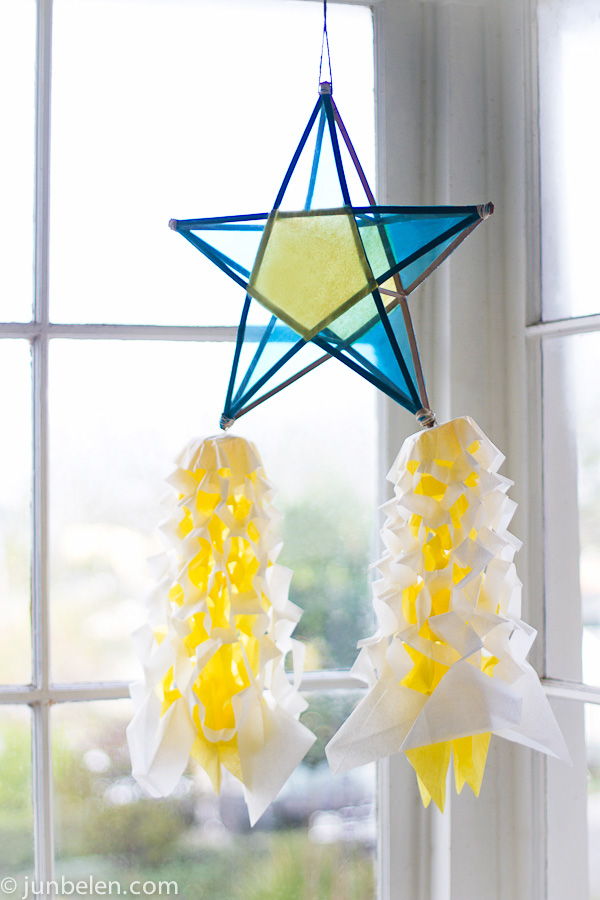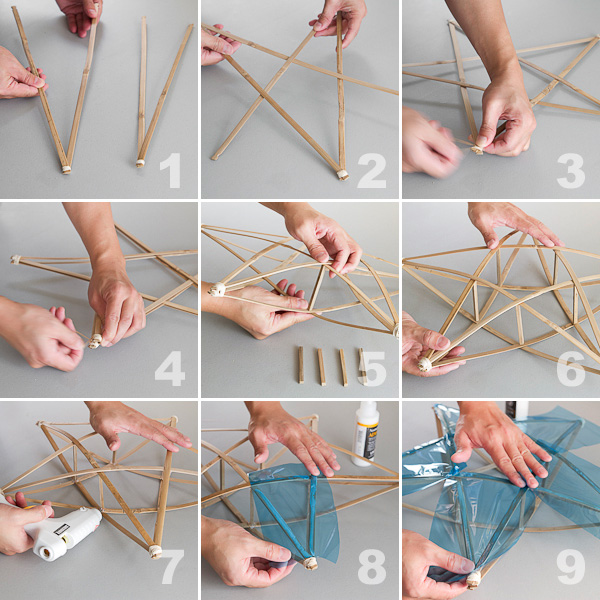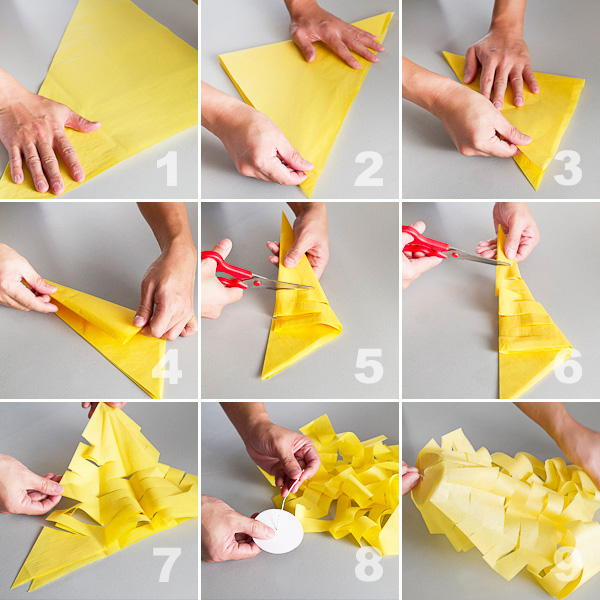“It’s time to wake up, Jun,” my mom whispered. I felt a tap on my shoulder but I barely moved. I remained still and tucked in under my blanket on an unusually cold December morning.
“You have to see the paról,” she prodded.
I quickly jumped out of my bed as soon as she reminded me about the lantern. I was up way past my bedtime the night before helping my brother-in-law build a lantern for school. It was a tradition back in elementary school to make star-shaped lanterns to celebrate Christmas. The popular paról — the Filipino word is derived from the Spanish farol, which means lantern — is ubiquitous during the Holidays. They are proudly displayed in homes by windows, in porches, or in verandahs. They are hung as decorations in churches, schools, markets, and shopping malls. The lanterns are traditionally made with bamboo sticks and paper but the fancier ones are made with native capiz shells embellished with multicolored lights programmed to dance in whimsical patterns.
“What time did he finish? Did he get enough sleep before work?” I asked worriedly. I was folding and cutting strips of papél de japón when I finally gave up and went to bed. My brother-in-law insisted that I get some sleep and promised that the lantern would be complete by the time I get up in the morning. He was a true lifesaver. When I was little, I was terrible with arts and crafts. I was good in Math — brilliant, in fact — but I was absolutely horrible in all things crafty, from sewing and knitting to woodworking and pottery. I couldn’t fold a proper origami or even carve a simple soap sculpture let alone make my own paról. This was why I was eternally grateful for my brother-in-law.
“He must have stayed up all night,” my mom said. “Come see the lantern outside. It is beautiful.”
The star was stunning. The bamboo frame shaped into a simple five-pointed star was wrapped fastidiously with cellophane. The shiny red and green panels looked like stained glass windows. The star had a halo around it made of a sturdy wire wrapped with strips of old newspaper and decorated with ruffled papél de japón. It had a pair of tails made of the same delicate Japanese paper, which fluttered flirtatiously in the wind. My mom was right. It was beautiful.
My paról-making skills have infinitely improved over the years even though my soap-carving skills have not. My brother-in-law taught me well. I still make Christmas lanterns whenever I get hold of those hard-to-find bamboo sticks and cellophane. I used to have a capiz lantern that I lugged back to California from home in a padded balikbayan box but it fell apart in one of our moves. It just feels more like Christmas with these magical lanterns around. Like when there’s bibingka and hot tea or jamón and queso de bola pan de sal sandwiches. It just feels more like home. I guess, that’s what traditions are all about.
Paról Directions
10 bamboo sticks
5 pegs
rubber bands
glue stick and glue gun
cellophane, tissue or washi paper
scissors
Tie a pair of bamboo sticks together on one end with rubber bands to form a V shape (1). Make three more pairs. You will have four Vs and two unattached sticks. Lock two Vs together to form an A shape and tie the two ends together with rubber bands (2). Thread one of the single sticks through the center of the A to form a star and tie the two loose ends together with rubber bands (3). Do the same for the other two Vs and remaining stick.
Tie the two stars together in all five points using rubber bands to form a single star (4). Carefully pull apart the center of the frame and place a peg in one corner of the pentagon (5). Place a peg in each of the other four corners (6). Secure each peg with glue using a glue gun (7).
Cut strips of cellophane, tissue paper, or washi paper big enough to cover the individual panels. Glue the strips of paper onto the frame with a glue stick (8). Cut the extra paper around the panel as close as you can to the frame. Clean up the edges by gluing and wrapping the uncut edges of paper around the frame. Continue until all panels are covered with paper (9).
Paról Tail Directions
4 1-1/2′ to 2′ square sheets of tissue or washi paper
2 three-inch circular cardboard cutouts
2 three-inch twist ties or strings
Fold into a triangle (1). Then fold again into a smaller triangle (2). Then fold again for the third time into a smaller triangle (3). Take the top corner of the triangle and fold over to the base across (4). Cut across the folded paper (5) starting from one side toward the other without cutting completely. Leave a half-inch space from the edge of the opposite side. Cut another slit one inch above previous slit but start from the opposite side. Again, do not cut completely but leave a half-inch space from the edge. Continue cutting slits starting from alternating sides of the folded paper until you reach two inches below the tip (6). Cut a small hole at the tip.
Carefully unfold and separate the sheets of paper (7). Fasten a short piece of twist tie or string in the center of each cardboard cutout (8). Insert the twist tie through the small hole at the tip of the tail (9). Attach the tails to the star using the twist ties or string.
Many thanks to the Bayanihan Community Center in San Francisco for providing the bamboo sticks and pegs. Every year, the Bayanihan Community Center organizes paról-making workshops and the annual Paról Lantern Festival and Parade in downtown San Francisco. You can order paról kits here.
And, of course, many thanks to my brother-in-law, Joven, for teaching me how to make a paról.


